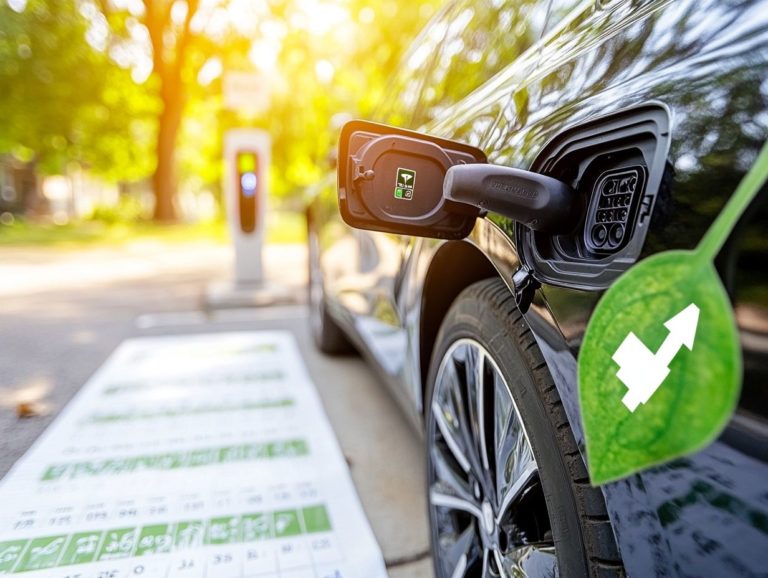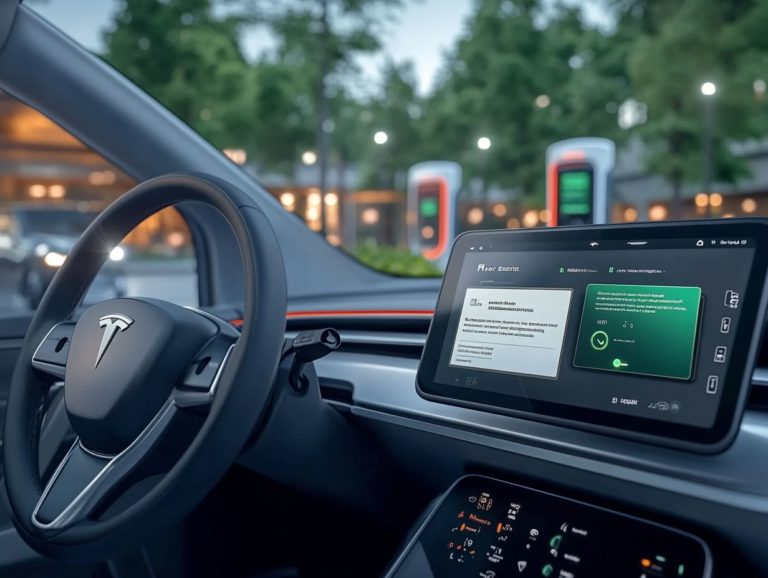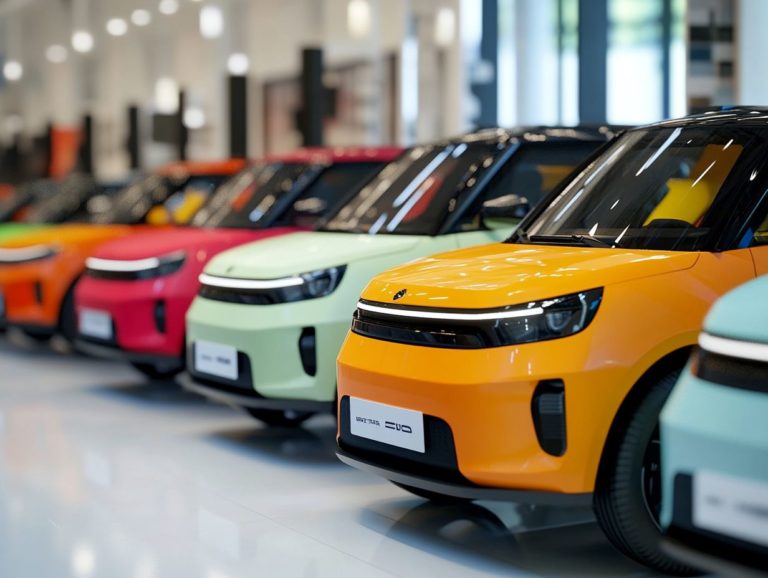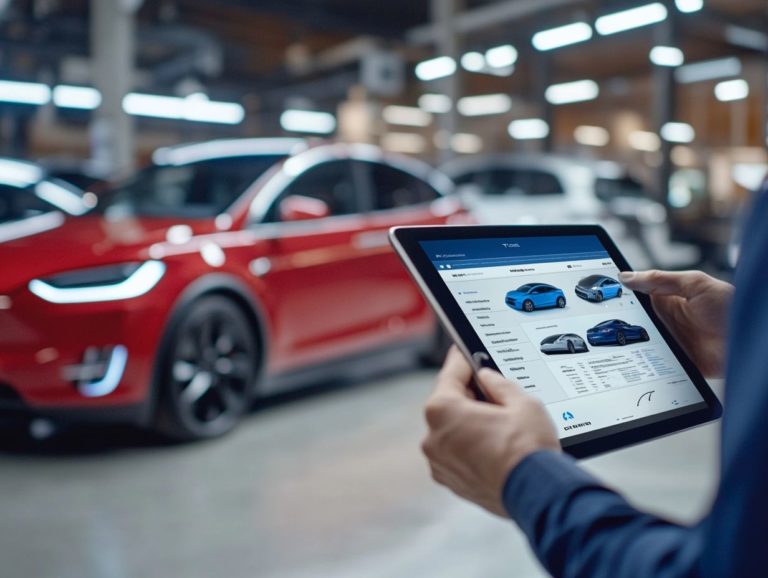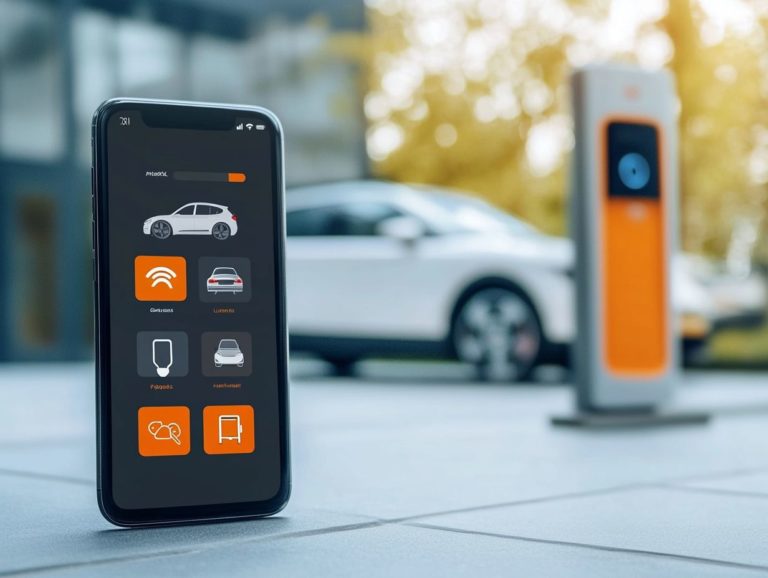5 Key Factors Influencing EV Prices
As electric vehicles (EVs) rise in popularity, grasping the factors that influence their pricing becomes essential for both potential buyers and industry watchers.
This article delves into five key elements that shape EV prices: advancements in battery technology, government incentives, production costs, competition, and raw material expenses.
Each of these factors significantly impacts the cost of an EV and can guide you through the evolving market landscape.
Get ready to uncover game-changing insights that could transform your next vehicle purchase!
Contents
- Key Takeaways:
- 1. Battery Technology and Capacity
- 2. Government Incentives and Policies
- 3. Production and Manufacturing Costs
- 4. Demand and Competition
- 5. Cost of Raw Materials
- What Are the Different Types of EVs Available?
- How Battery Technology Affects EV Prices
- What Are Some Government Incentives and Policies That Can Impact EV Prices?
- How Do Production and Manufacturing Costs Affect EV Prices?
- What Factors Influence the Demand and Competition for EVs?
- How Do Raw Material Costs Affect EV Prices?
- What Are Some Predictions for Future EV Prices?
- How Can Consumers Save Money When Purchasing an EV?
- What Are Some Common Misconceptions About EV Prices?
- How Can EV Manufacturers Lower Prices in the Future?
- What Are Some Factors That Could Cause EV Prices to Increase in the Future?
- Frequently Asked Questions
- What are the top 5 key factors that influence EV prices?
- How does battery technology affect EV prices?
- What impact do government incentives have on EV prices?
- How do production costs affect the prices of EVs?
- What role does competition play in influencing EV prices?
- How does consumer demand impact the prices of electric vehicles?
Key Takeaways:
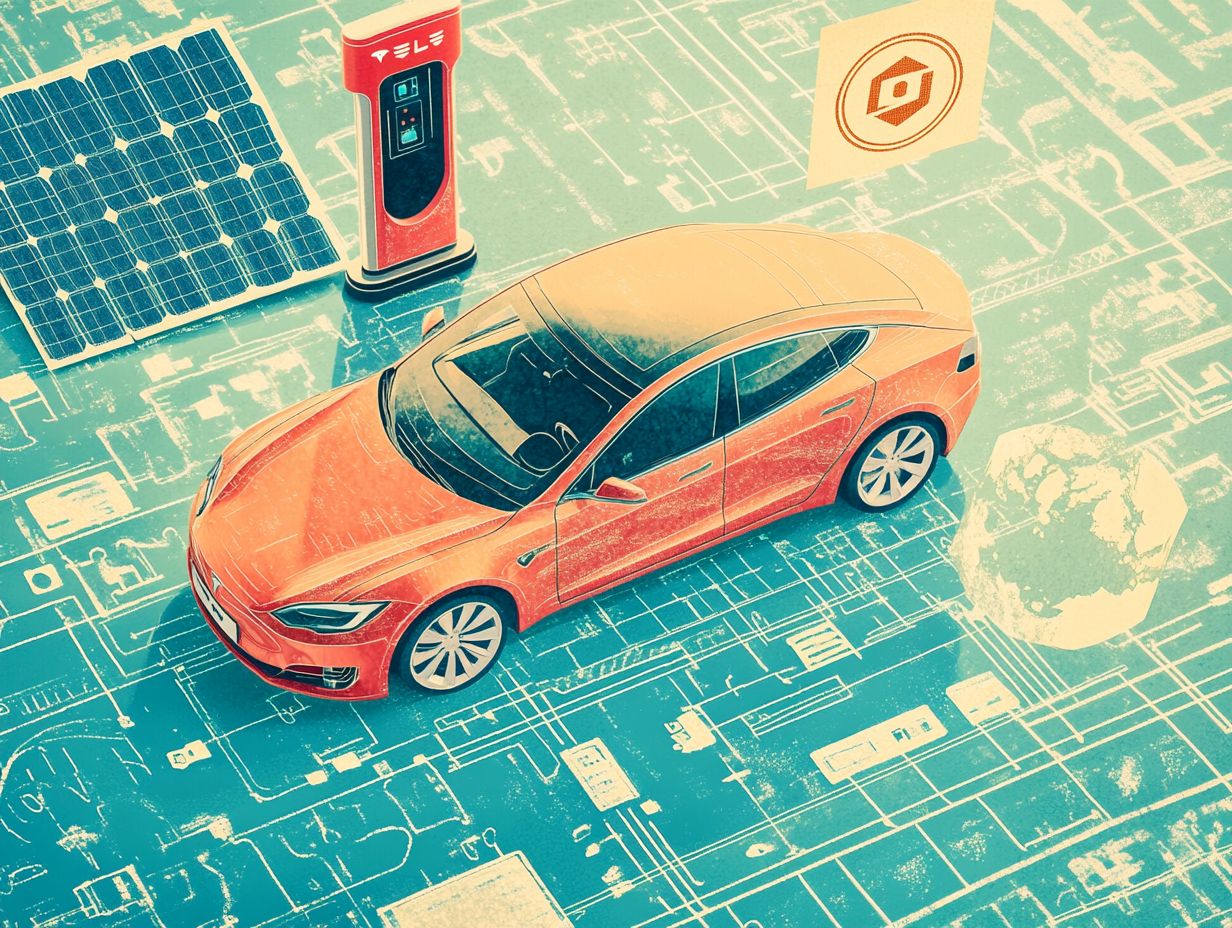
- Battery technology and capacity have a significant impact on EV prices, with higher capacity and advanced technology leading to higher prices.
- Government incentives and policies, such as tax credits and subsidies, can lower EV prices and make them more affordable for consumers.
- Production and manufacturing costs play a crucial role in determining EV prices, with efficient and cost-effective processes leading to lower prices.
1. Battery Technology and Capacity
Battery technology is at the forefront of the electric vehicle (EV) revolution, shaping everything from consumer demand and affordability to the development of charging infrastructure and its environmental footprint. As you think about a sustainable future, it’s exciting to see how battery technology is advancing!
These innovations are crucial for reducing production costs and enhancing charging speeds. By understanding the capacity (the amount of energy stored in a battery) and efficiencies of these technologies, you can make informed decisions, whether you re a manufacturer like Tesla or Ford or a consumer exploring options in the expanding EV market.
The ongoing innovations in battery technology promise improved energy density (how much energy a battery can store), longer lifespans, and faster charging capabilities, all of which directly influence vehicle pricing strategies. Key players in the market, such as Rivian and Lucid Motors, are harnessing these advancements to produce vehicles that are both efficient and accessible to a wider audience.
By optimizing their manufacturing processes (the steps and processes involved in getting materials to build cars) and prioritizing sustainable materials, these manufacturers are setting the stage for more cost-effective production methods.
As battery prices continue to decline thanks to these technological strides, you may find electric vehicles becoming increasingly financially viable, igniting a surge in consumer interest and ultimately reshaping the automotive landscape.
2. Government Incentives and Policies
Government incentives and policies significantly shape the electric vehicle (EV) market, offering financial allure for both consumers and manufacturers while addressing the environmental concerns associated with traditional vehicles.
Recent initiatives from leaders like President Biden are specifically designed to strengthen the EV market, particularly in states such as California, through a range of incentives and subsidies that encourage you to consider electric options. These policies also help lower production costs and improve charging infrastructure, making EVs a more appealing choice for those of you who prioritize sustainability.
These comprehensive strategies often feature tax credits, rebates, and grants that make the initial purchase of an electric vehicle more feasible for a broader audience. The collaboration between government entities and private enterprises plays a crucial role in expanding charging networks, ensuring that accessibility is no longer a hurdle for aspiring EV owners.
As more cities invest in EV-friendly policies, you can feel increasingly confident in making the switch, knowing that supportive infrastructures are evolving alongside the technology. This collaborative effort not only reduces carbon emissions but also nurtures a greener economy, aligning environmental and economic goals toward a sustainable future.
3. Production and Manufacturing Costs
Production and manufacturing costs are pivotal elements that shape the pricing structure of electric vehicles (EVs), directly influencing their affordability and accessibility in the market. Key factors include advancements in battery technology, the availability of rare metals, and the integration of automated processes in manufacturing, all of which play substantial roles in determining these costs.
As industry giants like General Motors and Ford work diligently to streamline production, understanding these dynamics can enhance your appreciation for the financial advantages of investing in electric vehicles.
Raw material price fluctuations and intricate supply chain logistics add layers of complexity to this economic landscape. For example, sourcing lithium and cobalt for batteries can introduce significant pricing variances, impacting the overall cost structure.
Investing in more efficient production techniques can help lower these costs, potentially resulting in lower prices for consumers. As battery technology advances, achieving greater energy density and reduced manufacturing times could further drive down costs, making EVs not only environmentally appealing but also economically attractive to a wider audience.
4. Demand and Competition
Consumer demand and market competition are shaking up the electric vehicle (EV) landscape in exciting ways, compelling you to consider sustainable alternatives as gas prices rise. With manufacturers like Tesla, Rivian, and Lucid Motors entering the scene, competition heats up, driving innovation in charging infrastructure and battery technology.
Understanding these shifting dynamics in consumer preferences is crucial for you to anticipate the future of the EV market and recognize how these changes can positively impact society in terms of environmental sustainability.
Factors such as changes in the economy, your awareness of environmental consequences, and a heightened understanding of climate change significantly shape this demand. As economic conditions fluctuate, you may find yourself prioritizing affordability, influencing your purchasing decisions.
The fierce competition in the market pushes advancements in EV technology, like faster charging speeds and enhanced battery longevity, ensuring you get more value for your investment.
Government policies also play a critical role, incentivizing the adoption of electric vehicles through subsidies and infrastructure development. This makes EVs an increasingly attractive choice for everyone.
Explore your options and join the movement towards sustainable driving today!
5. Cost of Raw Materials
The cost of raw materials plays a crucial role in determining the production costs of electric vehicles (EVs), impacting both you as a consumer and manufacturers in the ever-evolving EV market. With advancements in battery technology, the reliance on rare metals presents both challenges and opportunities for cost management and sustainability.
Grasping these nuances can enhance the financial attractiveness of electric vehicles, especially as producers strive to optimize their supply chains and cut expenses amid fierce competition.
The unpredictable prices of materials like lithium, cobalt, and nickel introduce a level of volatility for manufacturers, leading to fluctuating production costs that could ultimately influence retail prices. This uncertainty has prompted some companies to investigate alternative materials or recycling methods, seeking to reduce their dependence on these rare metals.
As you become more aware of these factors, your purchasing decisions may begin to shift, driven by perceptions of value and environmental impact.
By strategically navigating these challenges, manufacturers can position themselves more effectively in the market. This could boost their profitability while also contributing to more sustainable practices that resonate with you as a conscious consumer.
What Are the Different Types of EVs Available?
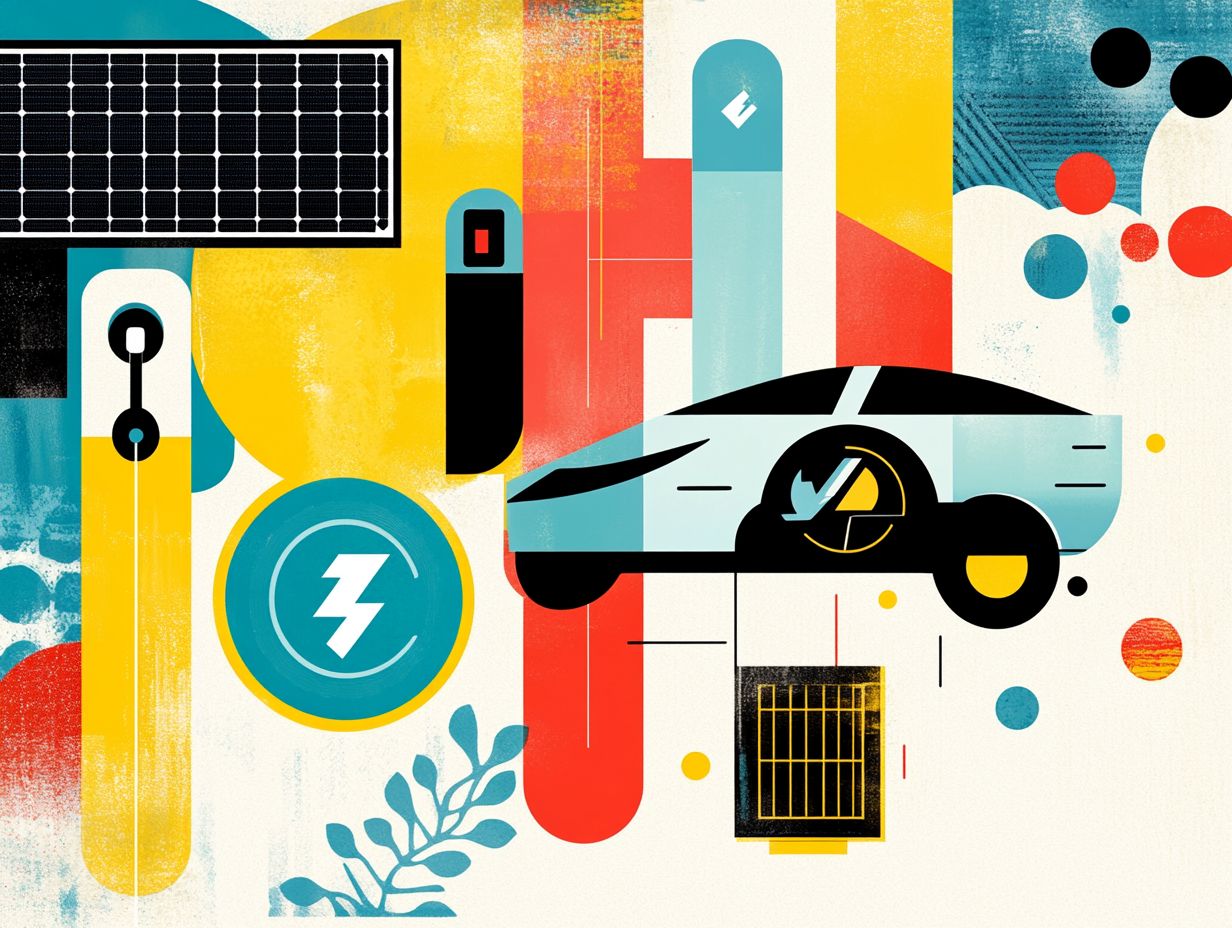
The electric vehicle (EV) market presents a captivating range of electric options, each crafted to meet your unique preferences and budget. This ultimately makes electric vehicles more accessible than ever.
Whether you’re considering battery electric vehicles (BEVs), plug-in hybrid electric vehicles (PHEVs), or fuel-cell electric vehicles (FCEVs), grasping the nuances of these types is vital for your next vehicle purchase.
Each variant brings its own set of benefits and challenges in terms of performance, range, and places to charge your vehicle, which makes careful evaluation essential.
For instance, BEVs are celebrated for their zero tailpipe emissions and often remarkable efficiency, making them a top choice for environmentally conscious consumers. On the other hand, PHEVs offer a harmonious combination of electric and traditional combustion engine technology, granting you the flexibility needed for longer journeys.
FCEVs, while still making their mark in the market, promise quick refueling and impressive ranges, though they do contend with infrastructure hurdles. Your preferences significantly shape these distinctions, as an increasing number of buyers prioritize sustainability and technological innovation.
Manufacturers must stay in tune with your desires, continually refining their strategies to enhance features, performance, and charging solutions to align with market expectations.
How Battery Technology Affects EV Prices
Battery technology plays a crucial role in shaping electric vehicle (EV) prices, influencing everything from production costs to charging speeds. This ultimately affects the financial appeal for you.
As battery advancements progress think lithium-ion and solid-state batteries, which use solid electrolytes instead of liquid ones and promise greater efficiency their efficiency and cost become essential in determining the market pricing for EVs.
Understanding this connection enables you to make informed decisions when selecting electric options that best meet your needs and budget. The rise of high-performance batteries can lead to lower manufacturing costs, which may eventually translate into reduced vehicle prices for you.
Enhanced charging capabilities can dramatically improve your experience, allowing you to spend less time tethered to charging stations and more time enjoying the open road.
When you look at different models, pay attention to battery performance and overall cost, as these are key factors to consider in this rapidly evolving marketplace. Being aware of technology s impact can empower you to make smarter choices now.
What Are Some Government Incentives and Policies That Can Impact EV Prices?
Government incentives and policies significantly shape the pricing landscape of electric vehicles (EVs), impacting their affordability and overall market viability for you. Initiatives led by leaders like President Biden aim to provide financial support that can considerably reduce the initial purchase cost of electric options.
These incentives not only encourage you to consider EVs but also help offset production costs, ultimately influencing market dynamics. The range of programs available, such as tax credits, rebates, and grants, makes EVs more accessible while enhancing the attractiveness of choosing electric models over traditional gasoline-powered vehicles.
For instance, various states offer additional incentives that further entice your purchasing decisions, tailoring benefits to local markets. As you recognize the long-term savings on fuel and maintenance, these rebates shift consumer behavior, making EVs an even more appealing choice.
As a result, these policies are crucial in accelerating the transition toward a greener automotive ecosystem. They foster an environment where EV manufacturers are motivated to innovate and lower prices, creating a more competitive market that benefits you.
Check your local incentives today to maximize your savings!
How Do Production and Manufacturing Costs Affect EV Prices?
Production and manufacturing costs play a crucial role in determining electric vehicle (EV) prices. A variety of factors directly influence these expenses and affect your purchasing experience. As battery technology evolves and new manufacturing processes emerge, understanding how these elements interact can shed light on the pricing strategies manufacturers use.
This insight empowers you to make informed decisions when evaluating the affordability and value of electric vehicles.
Notably, advancements in battery technology, like solid-state batteries and improvements in lithium-ion batteries, are essential for reducing overall costs. As companies adopt efficient manufacturing methods such as automation and innovative supply chain approaches the final prices are significantly impacted.
These technological trends not only boost performance and longevity but also typically lower the initial purchase price, making EVs more accessible to a broader audience. Stay updated on these exciting changes to navigate the evolving electric vehicle market with greater confidence regarding pricing structures and options.
What Factors Influence the Demand and Competition for EVs?
Consumer demand and market competition significantly shape the electric vehicle (EV) landscape. Factors such as rising gas prices and a growing awareness of environmental issues further drive this change. As new manufacturers enter the market, competition intensifies, leading to innovations in charging infrastructure and battery technology to meet your preferences.
Many buyers are motivated by government incentives that increase interest in electric vehicles. These incentives, including tax rebates, grants, or subsidies, make EVs more financially appealing.
In the race for competition, manufacturers focus not only on enhancing the vehicles but also on improving your overall experience, especially regarding the convenience and accessibility of charging stations. Each player aims to differentiate their offerings, leading to advancements that cater to your current needs while anticipating future ones, ultimately transforming how you view transportation.
How Do Raw Material Costs Affect EV Prices?
Raw material costs significantly impact electric vehicle (EV) prices, shaping production expenses and the overall financial appeal of electric options for you. The reliance on rare metals for battery technology, combined with fluctuating market prices, creates challenges for manufacturers striving to keep prices accessible.
As the industry evolves, understanding these costs helps consumers and manufacturers make well-informed decisions in a competitive market.
For example, you’ll notice that prices for lithium, cobalt, and nickel can dramatically fluctuate due to geopolitical factors and supply chain disruptions. These variations directly affect production costs and can lead to different final vehicle prices, which may deter potential buyers.
As battery technology advances, the demand for innovative materials can either alleviate or exacerbate these costs, impacting profit margins.
Manufacturers must adjust their strategies accordingly, and you should stay informed about how these economic dynamics influence your purchasing decisions. This knowledge empowers you to make informed choices right now, ensuring the transition to sustainable transportation remains achievable for everyone.
What Are Some Predictions for Future EV Prices?
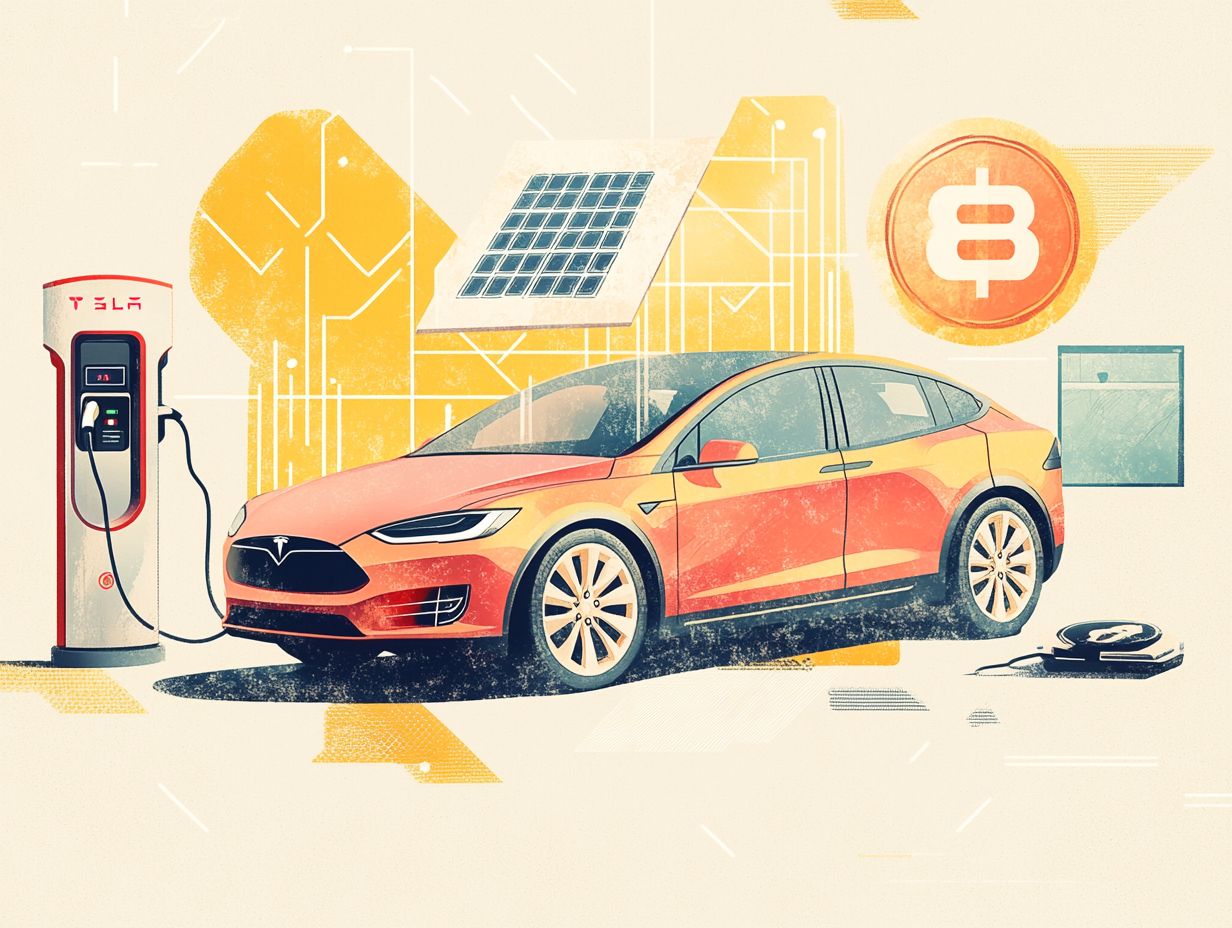
Predictions for future electric vehicle (EV) prices depend on many factors, such as advancements in battery technology, production costs, and the ever-changing dynamics of consumer demand.
Manufacturers are working diligently to improve efficiencies and cut expenses. As a result, the possibility of lower prices is becoming more realistic, especially as the market matures and competition heats up.
By grasping these trends, you can gain valuable insights into the financial implications of purchasing an electric vehicle in the years ahead.
Government policies, incentives, and regulations designed to promote sustainability can significantly impact pricing structures. Economic trends, like fluctuations in material costs and supply chain stability, will also play a vital role in shaping these prices.
Experts forecast that as new technologies develop and scale, EVs will become more affordable, making them more accessible than ever. This exciting shift is set to attract a surge of new buyers and ultimately reshape market dynamics while fueling further innovation.
Understanding these developments is crucial for anticipating how consumer behavior might shift. This paves the way for broader adoption of EVs in the mainstream market.
How Can Consumers Save Money When Purchasing an EV?
You can save money significantly when purchasing electric vehicles (EVs) by using various savvy strategies. Start by learning about government incentives and selecting models that deliver the best financial benefits.
Understand the available subsidies and financing options to significantly cut your initial costs, making the dream of owning an electric vehicle much more attainable!
Opting for models equipped with efficient battery technology can lead to considerable long-term savings on fuel and maintenance.
Many regions offer enticing tax credits or rebates that can translate into thousands of dollars off your purchase price. This eco-friendly option is incredibly appealing!
Various financing solutions, like lower-interest loans and leasing agreements, can help keep your monthly payments manageable.
When evaluating energy-efficient models, prioritize vehicles that qualify for additional savings through lower operating costs and reduced insurance premiums. By being strategic about your choices, you enhance your purchasing power while contributing to a more sustainable future.
What Are Some Common Misconceptions About EV Prices?
Common misconceptions about electric vehicle (EV) prices can cloud your judgment regarding their affordability and value compared to traditional vehicles. Many people think all EVs come with a hefty price tag, overlooking the array of government incentives and increasing market competition that have made them much more accessible.
In reality, plenty of models are available at competitive prices, and various government programs offer substantial rebates or tax credits to help offset that initial cost. This environment is designed to be inviting for consumers who may hesitate to make the switch.
As automakers ramp up production and new players enter the market, competition continues to drive prices down, making electric options even more enticing. Understanding these dynamics gives you a clearer perspective, factoring in the savings on fuel and maintenance over time, which often outweigh any initial cost concerns.
How Can EV Manufacturers Lower Prices in the Future?
Electric vehicle (EV) manufacturers can potentially lower prices in the future through a blend of technological advancements, optimized production costs, and strategic market positioning. By investing in cutting-edge battery technology and automating processes, manufacturers can enhance efficiency and reduce reliance on expensive raw materials. This ultimately leads to lower prices for consumers. Understanding these strategies is essential for anyone navigating the competitive landscape of the EV market.
Embracing efficient ways to build cars allows manufacturers to streamline operations and minimize waste. This boosts output without compromising quality. Another effective approach is collaborating with suppliers to secure bulk purchasing agreements, which allow manufacturers to buy materials in large quantities at discounted prices.
However, challenges such as fluctuating raw material costs and regulatory hurdles can complicate the journey toward affordability. Seizing opportunities in emerging markets and tapping into government incentives for sustainable manufacturing can strengthen these efforts. This creates a win-win scenario where both manufacturers and buyers benefit from reduced prices and increased accessibility to electric vehicles.
What Are Some Factors That Could Cause EV Prices to Increase in the Future?
Several factors could lead to an increase in electric vehicle (EV) prices in the future. It’s essential to stay informed about these changes, including the top challenges to EV sustainability. Rising raw material costs, changes in government policies, and shifts in consumer demand all play a role in this complex scenario.
As the global economy fluctuates, the prices of crucial materials for battery production may rise, inevitably impacting production costs and, subsequently, dealership prices. Understanding these potential challenges can help you navigate the evolving dynamics of the EV market.
The high demand for lithium, cobalt, and nickel essential for batteries can strain supply chains and increase costs. If governments implement stricter regulations or cut back on subsidies designed to promote electric mobility, manufacturers might face higher operational expenses, which could ultimately lead to higher retail prices.
As a consumer, you ll likely weigh the long-term benefits of electric vehicles against these rising costs. These interconnected factors not only shape manufacturing strategies but also influence how you perceive and accept electric vehicles in an ever-evolving market landscape.
Frequently Asked Questions
What are the top 5 key factors that influence EV prices?
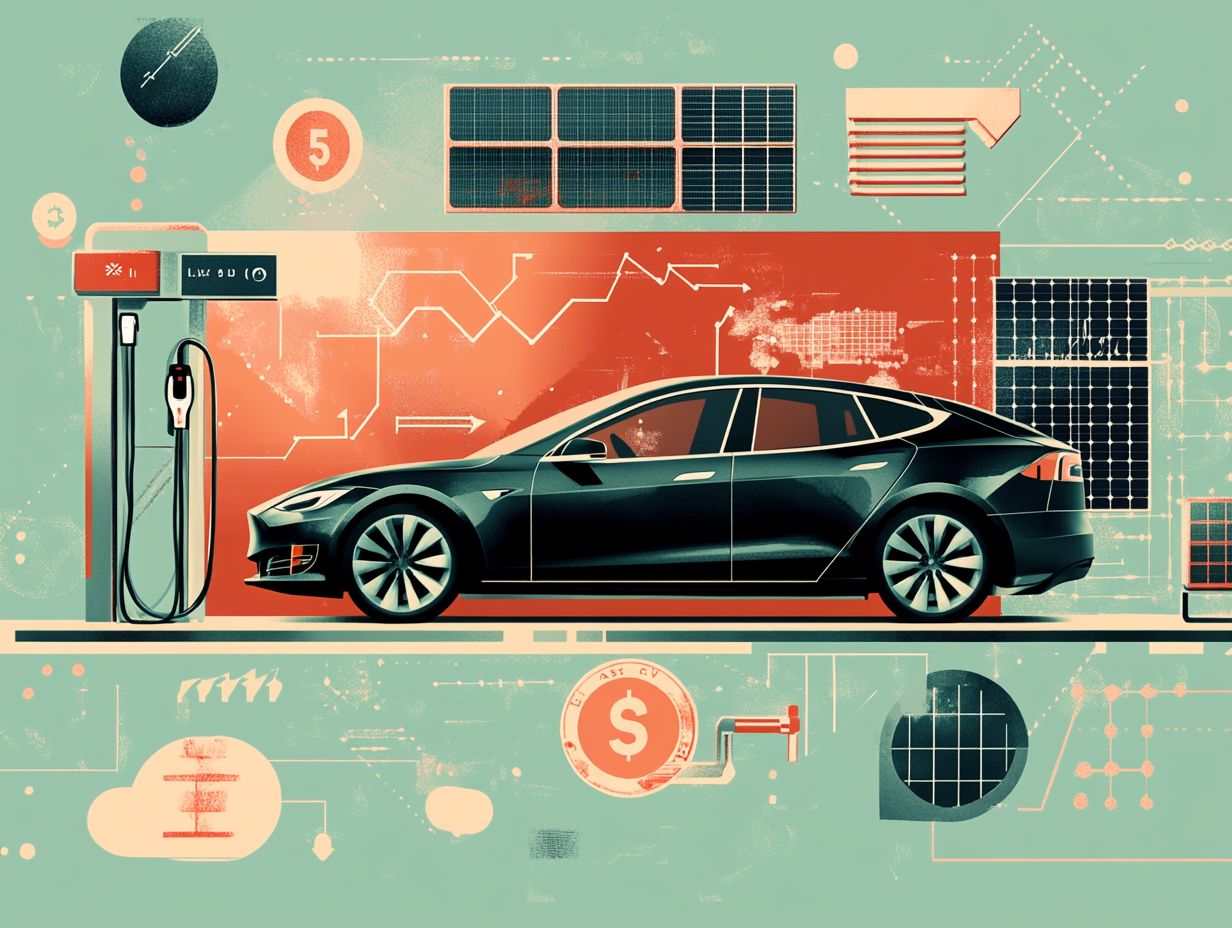
The top 5 key factors that influence EV prices are:
- Battery technology
- Government incentives
- Production costs
- Competition
- Consumer demand
How does battery technology affect EV prices?
Battery technology significantly impacts the price of EVs as it accounts for a large portion of production costs. As battery technology improves and becomes more efficient, the cost of producing EVs decreases, resulting in lower prices for consumers.
What impact do government incentives have on EV prices?
Government incentives, such as tax credits and rebates, can significantly lower the price of EVs for consumers. These incentives help promote the adoption of EVs, making them more affordable for the general public.
How do production costs affect the prices of EVs?
The production costs of EVs including materials, labor, and research and development play a significant role in determining their prices. As production processes become more efficient and economies of scale are achieved, the cost of producing EVs decreases, leading to lower prices for consumers.
What role does competition play in influencing EV prices?
Competition among EV manufacturers can drive down prices as companies strive to attract customers with more affordable options. This competition can also lead to innovation and improvements in EV technology, making them more appealing and cost-effective for consumers.
Stay updated on EV trends and explore your options to make informed decisions!
How does consumer demand impact the prices of electric vehicles?
Consumer demand plays a vital role in setting prices for electric vehicles. When interest in electric vehicles rises, manufacturers can produce more cars, which helps lower prices.
If demand drops, prices are likely to rise due to limited production and higher costs for manufacturers.

